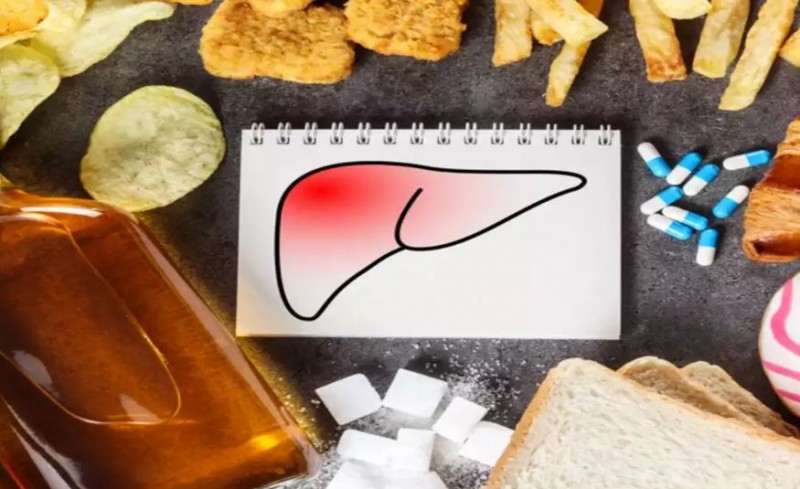
Non-alcoholic fatty liver disease (NAFLD) is a growing health concern, affecting millions of people worldwide. While excessive alcohol consumption is a well-known cause of liver disease, recent studies highlight that high sugar intake, especially from sweets and sugary drinks, can also significantly increase the risk of developing NAFLD. This article explores how sugar contributes to fatty liver disease and provides practical tips on how to reduce this risk.
Understanding NAFLD:
NAFLD is a condition characterized by the accumulation of excess fat in the liver of people who consume little or no alcohol. It encompasses a spectrum of liver diseases, from simple fatty liver (steatosis) to more severe non-alcoholic steatohepatitis (NASH), which can lead to liver fibrosis, cirrhosis, and even liver cancer. The rising prevalence of NAFLD is closely linked to increasing rates of obesity and metabolic syndrome, emphasizing the importance of diet in its development.
The Role of Sugar in NAFLD:
Sugar, particularly fructose, plays a significant role in the development of NAFLD. Unlike glucose, which is metabolized by various tissues in the body, fructose is primarily processed in the liver. This metabolic difference is crucial in understanding how sugar affects liver health.
Fructose and Liver Metabolism:
When we consume fructose, it is transported to the liver, where it can be converted into fat through a process called de novo lipogenesis. This process contributes to fat accumulation in the liver, a hallmark of NAFLD. High fructose intake can also increase liver inflammation and insulin resistance, further exacerbating liver damage.
Research Findings:
Several studies have investigated the relationship between sugar consumption and NAFLD. A study published in the Journal of Hepatology found that individuals with NAFLD consumed significantly more fructose than those without the disease. The study highlighted that higher fructose intake was associated with increased liver fat accumulation and inflammation. Another study in the American Journal of Clinical Nutrition demonstrated that reducing sugar consumption, particularly fructose, led to significant reductions in liver fat and improvements in liver function markers.
Impact of Sugary Drinks:
Sugary drinks, such as sodas and fruit juices, are major sources of fructose. Regular consumption of these beverages is linked to the development and progression of NAFLD. A study published in the Journal of Gastroenterology found that individuals who consumed high amounts of sugary drinks had a higher prevalence of NAFLD compared to those who drank fewer sugary beverages.
Practical Tips to Reduce the Risk of NAFLD:
Reducing sugar intake is crucial in preventing and managing NAFLD. Here are some practical tips to help you reduce your risk:
Cut Down on Sugary Drinks:
Replace sodas and fruit juices with water, herbal teas, or unsweetened beverages.
Opt for whole fruits instead of fruit juices to reduce fructose intake.
Read Food Labels:
Check food labels for added sugars and choose products with lower sugar content.
Be aware of hidden sugars in processed foods, sauces, and condiments.
Choose Healthier Sweeteners:
Use natural sweeteners like stevia or monk fruit instead of sugar.
Avoid artificial sweeteners, which can also have negative health effects.
Increase Fiber Intake:
Incorporate more fiber-rich foods like vegetables, fruits, whole grains, and legumes into your diet.
Fiber helps regulate blood sugar levels and reduces the absorption of fructose in the liver.
Adopt a Balanced Diet:
Follow a balanced diet rich in lean proteins, healthy fats, and complex carbohydrates.
The Mediterranean diet, which emphasizes fruits, vegetables, whole grains, and healthy fats, has been shown to be beneficial for liver health.
Maintain a Healthy Weight:
Achieve and maintain a healthy weight through regular exercise and a balanced diet.
Weight loss can significantly reduce liver fat and improve liver function.
Limit Processed Foods:
Reduce consumption of processed and fast foods, which are often high in added sugars and unhealthy fats.
Prepare home-cooked meals using fresh, whole ingredients whenever possible.
The connection between sugar consumption and the development of NAFLD is clear. By understanding the role of fructose in liver metabolism and making informed dietary choices, individuals can significantly reduce their risk of developing fatty liver disease. Limiting sugar intake, especially from sugary drinks, and adopting a balanced, nutrient-rich diet are essential steps in promoting liver health and preventing NAFLD.
Narendra Modi 'Shepherded India's Remarkable Transformation': Singapore PM Lawrence Wong
Weight Loss Mantra - Jeera Water: These 8 Benefits Will Surprise You
Feeling Your Stomach Bloated? This Is Probably Why, Here's Remedy